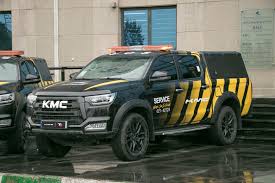Vehicles are an essential part of modern life, enabling transportation for people and goods across various distances. This article delves into the different types of vehicles, their technologies, and current trends shaping the Autovermietung Fuerteventura.
Types of Vehicles
1. Passenger Vehicles
- Cars: The most common form of personal transport, cars come in various shapes and sizes, from sedans to hatchbacks to SUVs.
- Motorcycles: Two-wheeled vehicles that offer agility and speed, motorcycles are favored for both commuting and recreational purposes.
- Bicycles: Human-powered and eco-friendly, bicycles are an excellent option for short distances and promote healthy living.
2. Commercial Vehicles
- Trucks: Designed for transporting goods, trucks vary in size from light-duty to heavy-duty models.
- Vans: Often used for transporting people or cargo, vans can be configured for specific commercial needs, such as delivery or passenger transport.
- Buses: Public transportation vehicles that carry numerous passengers along designated routes.
3. Special Purpose Vehicles
- Emergency Vehicles: Including ambulances, fire trucks, and police vehicles, these are designed for rapid response and public safety.
- Construction Vehicles: Heavy machinery like bulldozers, excavators, and cranes fall into this category, essential for building infrastructure.
- Agricultural Vehicles: Tractors and harvesters are vital for modern farming practices.
4. Electric and Hybrid Vehicles
- Electric Vehicles (EVs): Powered entirely by electricity, EVs are increasingly popular due to their environmental benefits and advancements in battery technology.
- Hybrid Vehicles: Combining a traditional internal combustion engine with an electric motor, hybrids aim to improve fuel efficiency and reduce emissions.
Vehicle Technologies
1. Engine Technology
- Internal Combustion Engines (ICE): The traditional engine type using gasoline or diesel, known for power but also for higher emissions.
- Electric Motors: Used in EVs, these motors convert electrical energy into mechanical energy, offering instant torque and quieter operation.
2. Safety Features
- Advanced Driver-Assistance Systems (ADAS): Technologies like lane-keeping assist, adaptive cruise control, and automatic emergency braking enhance vehicle safety.
- Crash Test Ratings: Organizations like the National Highway Traffic Safety Administration (NHTSA) provide ratings based on crash test results, influencing consumer choices.
3. Infotainment Systems
- Connectivity: Modern vehicles often come with systems that integrate smartphones, enabling navigation, music streaming, and hands-free communication.
- User Interface: Touchscreen displays and voice commands are becoming standard, making interactions safer and more intuitive.
Trends in the Automotive Industry
1. Sustainability and Environmental Concerns
- With growing awareness of climate change, manufacturers are focusing on sustainable materials, electric vehicles, and fuel efficiency to reduce the carbon footprint.
2. Autonomous Vehicles
- Self-driving technology is progressing rapidly, with companies like Tesla, Waymo, and others developing vehicles capable of navigating without human intervention.
3. Mobility as a Service (MaaS)
- This concept promotes the integration of various transport services into a single accessible platform, allowing users to plan and pay for their journeys seamlessly.
4. Digitalization
- The automotive industry is increasingly utilizing data analytics, artificial intelligence, and cloud computing to enhance manufacturing processes and customer experiences.
Conclusion
Vehicles have evolved tremendously, from basic modes of transport to complex machines integrated with cutting-edge technology. As the industry continues to adapt to environmental challenges and technological advancements, the future of vehicles looks promising. Embracing sustainability and innovation will likely lead to safer, more efficient, and user-friendly transportation solutions in the years to come.
